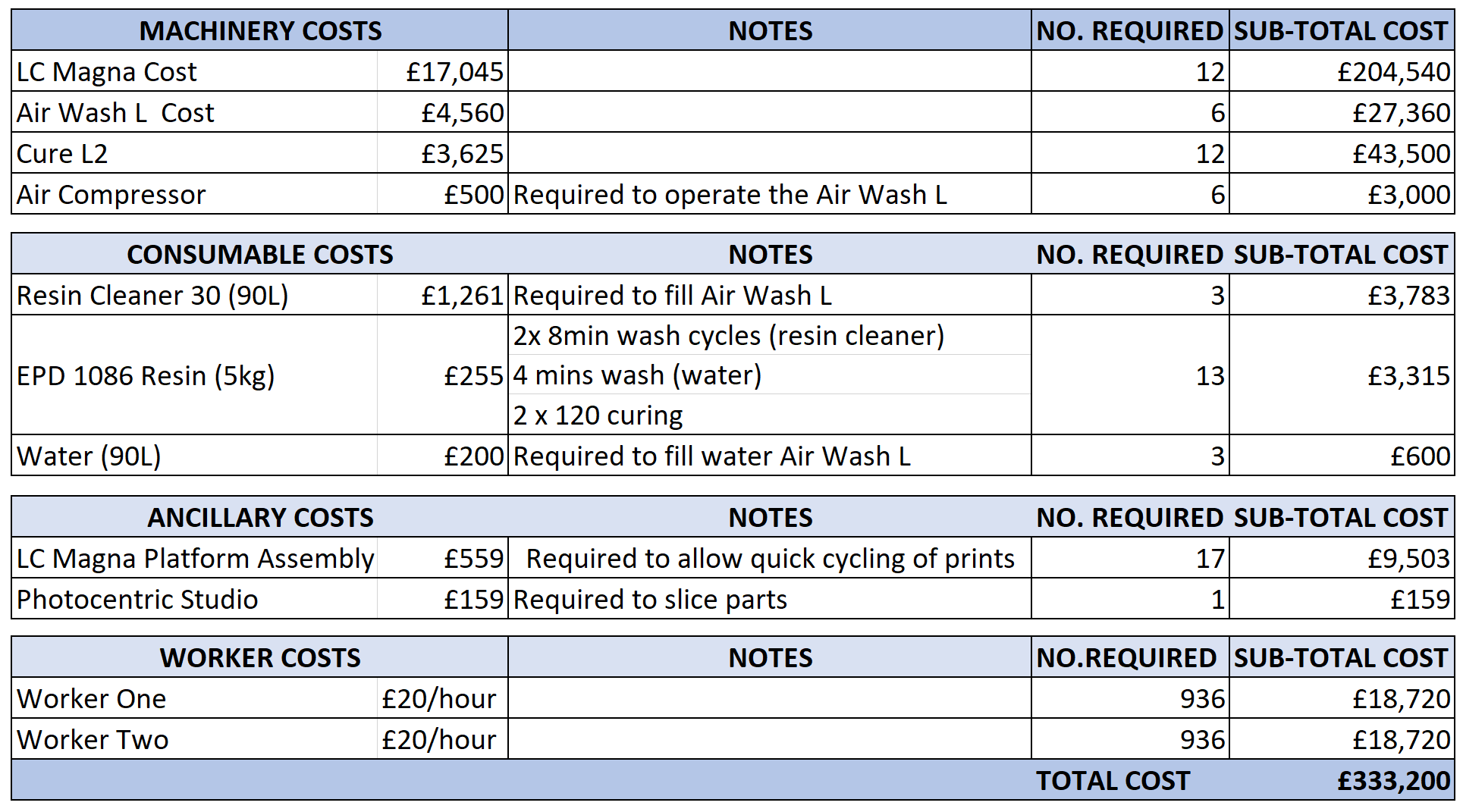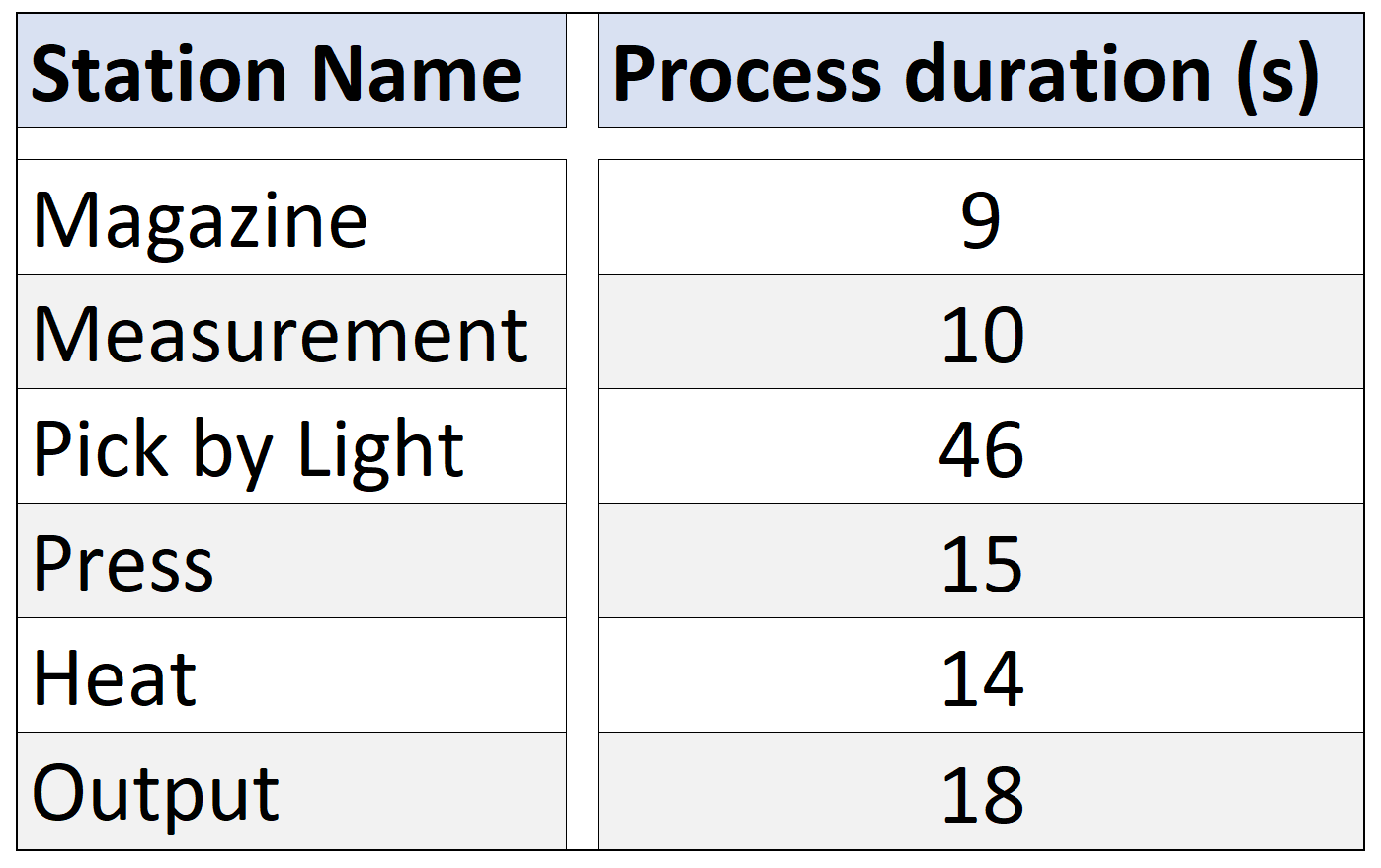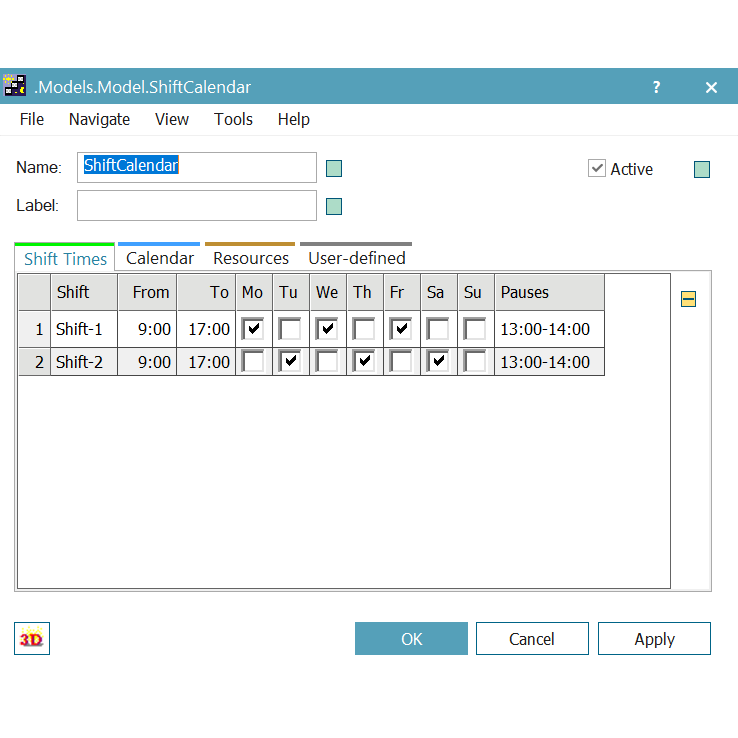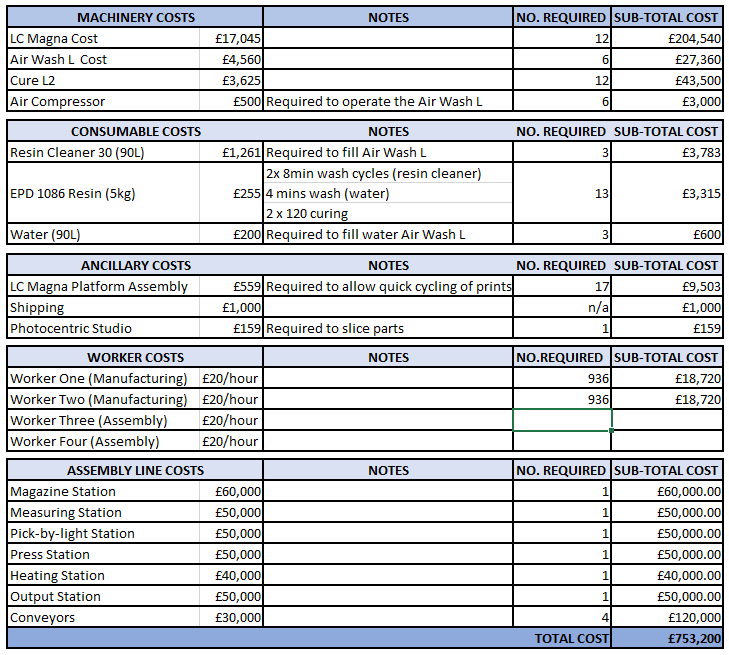DIGITAL MANUFACTURING - WEEK SEVEN: Digital twin
Author: Callum Baxter Date: 18/03/2023 Topic: Digital Design and Manufacture
Introduction
The past three weeks have given me time to understand the fundamentals of Siemens Plant Sim and to accurately model the entire manufacturing and assembly processes involved in the production of the phone cases. My independent learning was reinforced by classes about Siemens Plant Sim and lectures regarding the theory behind digital twinning and it’s application within industry 4.0. During these classes I learnt simple coding within Plant Sim, how to analyse and improve upon the performance of my simulation using experiments, and how to assign workers to tasks according to a weekly schedule. Additionally, I was given a challenge to maximise the output of our simulated production line within a theoretical budget of £1,000,000. This challenge will be completed within a future blog post.
This blog post will focus on how I used the data from my manufacturing strategy to create a digital twin of the additive manufacturing facility and Festo CP assembly line. The goal of these digital twins were to validate my additive manufacturing strategy, and to inform the creation of a cost effective assembly line work programme.
Siemens Plant Sim
Plant Sim is a digital twinning software produced by Siemens that allows the accurate simulation of industrial processes. These processes can utilise data collected from the real world to simulate processes in real time and can enable a company to virtually assess it’s operations, make changes, and then evaluate those changes without impacting its real-world production capabilities. Information gathered by using this software can inform manufacturing professionals about how to layout and build a new and efficient production facility or how to improve an existing one.
Additive Manufacturing SimulatioN
Validating the manufacturing strategy that I developed within week six’s blog required the creation of an accurate digital twin using Siemens Plant Sim. If my simulated AM facility can output 3 or more batches per printer per week, and work within the resource limitations and weekly schedule determined by my manufacturing strategy, then I would consider it viable.
Table 1 shows the resources I determined were required to meet the annual production target of 50,000 phone cases and figure 1 shows the layout of each of these resources within a simulated AM facility.
Table 1: Resource requirements
Fig. 1: AM production facility layout
Each of the stations within the simulated AM facility were adjusted to match their real-world counterparts. For example, figure 2 shows the adjustments made to the LC-Magna station to ensure it’s production duration was accurate.
Figure 3 shows some statistics after one week of simulated production. Each printer was able to produce 3 batches, meaning 36 sub-batches were produced that each contained 30 parts. This aligns with my predictions within week six’s blog.
This simulation aligned to the schedule and resource limitations specified within my manufacturing strategy, including taking into consideration the amount of workers and their weekly work schedule. However, it was assumed that the entire batch of phone cases would be post-processed at once and that this process would take approximately seven hours. Additionally, the application of ceramic coloured coatings was not considered. Therefore, an additional worker may be required to work to on the application of ceramic coatings for one/two days per week if seven hours was not sufficient to complete each of the post processing steps in addition to the application of ceramic coatings.
Within my manufacturing strategy I integrated time for research and development activities during January. Within this time the manufacturing strategy could be iterated upon to take into consideration the application of coloured ceramic coatings once data regarding this process has been collected.
Figure 4 shows a bottle neck analysis of my simulated AM production facility. As shown in the chart, the main bottleneck is the LC-Magna printers due to their long production times. This bottleneck could be alleviated by purchasing one additional printer to allow for printer substitutions when other printers are being maintained/repaired.
The button below will download a version of the additive manufacturing digital twin for viewing within Siemens Plant Sim.
Production Line Simulation
To determine the resources required to meet the annual production target of 50,000 phones cases, it was important to simulate the phone case assembly line.
Prototypes of the phones cases were additively manufactured and tested on the Festo assembly line. These tests were used to collect real-world data that would help to inform my production strategy and simulation statistics. For example, table 1 shows the duration of each process within the production line and figure 1 shows how this information was used to customise the stations within my simulation.
The video (below) shows a prototype phone case as it travels through each of the six Festo CP stations. This video was used to record the duration of each process within the production line so that the digital twin could accurately represent its real-life counterpart.
Table 1: Process durations for each station within the Fest CP production line.
Figure 6 shows the results after simulating one week of production within Plant Sim. 3269 phones cases were processed and assembled within one week following the schedule illustrated by figure 4. Following this work schedule would allow all of the phone cases to be assembled within approximately 4 months (16 weeks). This means that the assembly of the phone cases would not need to begin until the latter half of the year when most of the cases have been additively manufactured, they could then be shipped en-masse to the assembly facility once assembly begins. Shortening the assembly time frame will reduce the cost of hiring workers and running the assembly facility. Table 2 shows how the assembly timeline will run simultaneously with the additive manufacturing timeline. As illustrated within the table, an extra month has been allowed to accommodate for errors within the assembly process.
Figures 2-4 show the shift calendar, worker table and bottleneck chart for the simulation of the assembly line. It is clear from this chart that the pick-by-light station is inefficient and could be improved via the use of automated robotics or doubling up the quantity of these stations and their workers. However, these options should not be considered within the context of the brief. This is because the assembly line can already meet the production target of 50,000 phones without any improvements and it isn’t cost effective to improve a system that meets its targets without issue.
Table 2: Manufacturing and assembly timelines running in parallel.
The button below will download a version of the Festo cyber-physical assembly line to view within Siemens Plant Sim.
Conclusion
The simulation of the additive manufacturing plant helped to verify my manufacturing strategy from week six’s blog and identify areas where knowledge was lacking.
Using the Siemens Plant Sim I made predictions about the total cost of both the manufacturing and assembly facility. The costing of the assembly line equipment from Festo CP lab was stipulated within the challenge brief (which can be found here).
Assuming an annual revenue of £1,000,000, the production strategy I have devised can be considered viable due an approximate profit of £240,000, as shown in Table 3.
Table 3: Costings for the production of 50,000 phone cases
REFERENCES
No information was referenced within this blog post.














